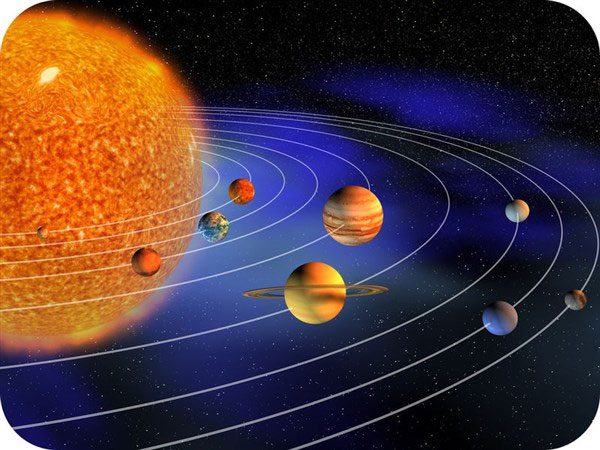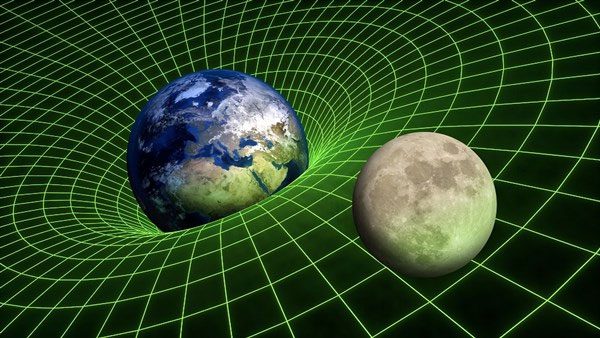Force, or interaction, is a fundamental manifestation and plays a vital role in the universe.
If the universe is filled with matter but lacks interactions between them, there would be no formation of nuclei, atoms, molecules… and no galaxies, stars, or planets.
Fundamental Interactions of Nature
Electromagnetic interaction, or electromagnetic force, is the interaction between charged particles. For example, protons with the same positive charge repel each other, while they attract electrons due to the negative charge of electrons.
This interaction is not just about the attraction or repulsion of magnetic poles due to the excess or deficiency of electrons. The most important aspect is that the attraction between protons and electrons allows electrons to maintain their orbits around atomic nuclei, and thus, atoms, molecules, and more broadly, all the matter we see daily, are formed.
Electromagnetic interaction is mediated by a type of boson known as the photon, which we commonly refer to as the particle that transmits light. In fact, light is an electromagnetic wave with a wavelength suitable for creating images on the human retina. The photon itself has no mass and no charge; it merely plays a role in transmitting electromagnetic interactions through its oscillation frequency.
Frictional force arises when one object slides over another due to the electromagnetic interactions of the atomic particles at the contact surface. The elastic force of a spring or the tension in a string is also an electromagnetic interaction caused by changes in the distances between atoms, leading to a change in the magnitude of the interaction compared to the initial stable state. The force generated by muscles when lifting a heavy object or any other movement is due to the elasticity of muscle fibers, which is also an electromagnetic interaction…
Strong Interaction (also known as the strong nuclear force) is caused by a type of boson called gluon—a massless and charge-less particle. This interaction binds quarks, the main components of two types of baryons: protons and neutrons, which we know are the particles that make up atomic nuclei.
It is thanks to this interaction that baryons are formed, and it binds protons and neutrons together in the atomic nucleus (protons with the same charge generate a repulsive electromagnetic force; the presence of neutrons allows the atomic nucleus to exist).
Strong interaction is the strongest of the fundamental interactions in nature, but it also has the shortest range of effect.

Simulation of forces in the universe.
Outside the radius of an atomic nucleus, strong interaction does not take effect, and this is precisely why matter can exist as it does today. If the range of this interaction could extend as far as electromagnetic interaction, there would be no existence of atoms with electron shells, as they would be crushed by the attractive force between the nuclei themselves (since this force is much stronger than the repulsive electromagnetic force between the nuclei).
Weak Interaction (or weak nuclear force) plays a role in the beta decay of neutrons, leading to nuclear phenomena such as radioactivity and fission. Neutrons themselves are unstable when isolated; they are stable only when bound to protons.
When isolated, neutrons can absorb or emit W or Z bosons and undergo beta decay to form a proton, an electron, and a part of a neutron.
The nuclei of heavy elements contain many protons and correspondingly require many neutrons to prevent the protons from repelling each other. However, when there are many neutrons, some may become isolated from protons, escaping the influence of strong interaction.
In this case, weak interaction causes them to decay, making the nucleus unstable. Elements whose nuclei exhibit this phenomenon are called radioactive elements. The heavier the nucleus, the less stable it is, and thus weak interaction is what keeps the number of elements in the universe finite rather than infinite.
The Standard Model of Particle Physics
The three types of interactions mentioned above are now unified in the Standard Model of particle physics. According to the Standard Model, under sufficiently high energy conditions, these interactions unify, although, as noted, they seem very different in mechanism.
In the cosmological model based on the Big Bang theory, the first phase of the universe from the age of the universe at 10-43s to the moment of 20-36s is referred to as the Grand Unification Era, during which the three types of interactions mentioned have not yet separated from each other.
Immediately following the Grand Unification Era is the Electroweak Era, during which the strong interaction has separated, but the other two interactions remain unified, referred to as electroweak interaction. By the quark era, when the age of the universe is 10-12s, the universe cools enough for electromagnetic and weak interactions to separate.

Interactions tend to pull objects and particles with mass towards each other. (Illustrative image).
Gravitational Interaction (or Gravity)
Gravitational interaction tends to pull objects and particles with mass towards each other. It is the weakest of the four fundamental interactions of nature when considered on the same specific object, but it has the longest range of effect.
It plays a major role in the formation of large structures in the universe, from stars, planets, asteroids, and satellites to galaxies, clusters, and superclusters of galaxies. The Earth and other planets orbiting the Sun are also due to this type of interaction.
Although it is the weakest force, gravity not only has the longest range but is also an unstoppable force; any artificial weightless environment or material barrier against gravity found in science fiction films is unscientific.
This cannot happen not because of technology but due to the general principles of the universe. For this reason, gravity is simultaneously the type of force that causes the most violent phenomena in the universe, such as the collapse of matter forming neutron stars or black holes and supermassive black holes.
In this phenomenon, due to the enormous amount of matter, the gravitational force is strong enough to overcome electromagnetic and strong interaction forces, causing the material structure to be destroyed. Gravitational force is very common in daily life, such as our ability to stand on the ground and objects thrown into the air falling back down due to gravity.
Some phenomena referred to as forces, such as the ground’s resistance when you stand on it or Archimedes’ force in liquids, are merely indirect manifestations of gravitational force.
The reason this common force is mentioned last in the article is that it is the only type of interaction among the four fundamental interactions of nature not included in the Standard Model.
Is There a Fifth Fundamental Interaction?
The existence of a fifth natural interaction is still believed by many scientists, especially since the presence of dark matter has been confirmed. To date, some experiments have shown the participation of a strange variable that is thought to be a previously unknown interaction that is very weak.
However, as of now, the fifth interaction has no specific description. Therefore, the fundamental interactions of nature still consist of only four, with three interactions unified in the standard model and the gravitational interaction standing independently from them.





















































